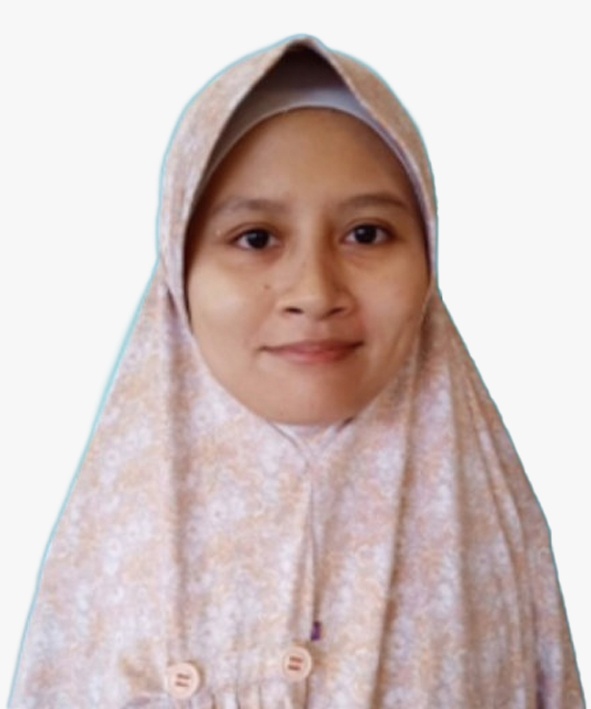Experiencing Loneliness in Motherhood
Introduction: Motherhood is a lifelong learning process. Becoming a mother involves huge changes and a major shift in identity. We usually don’t pair loneliness with motherhood, but researchers have found that motherhood could be filled with lonely feelings. A study by the British Red Cross found that more than 83% of mothers under 30 years old feel lonely at some time. Even before COVID, one study found that more than 90 percent of moms reported feeling lonely after having kids, over one-third said they cried regularly, and more than half suffered from anxiety. This study aims to determine the problems with loneliness in motherhood and how they influence the whole family’s long-term growth and wellness. Methods: PubMed and Google Scholar were searched using the following keyword: (loneliness) AND (motherhood) AND (mental health) AND (maternal) using the journal publication filter for the 2018-2023 issue. Review: Loneliness isn’t only a concern for mothers but also for all family members. Mothers who experience a high degree of loneliness are likely to be depressed, which in turn leads to decreased self-esteem and poor health, and consequently the poor health of their children. Stronger involvement of the mother’s family, friends, and other support systems should be promoted. Conclusions: Researchers should pay attention to the facts that building close connections with others can stop social isolation in mothers from taking a toll on their mental health
Keywords: Loneliness, Motherhood, Mental Health, Maternal
INTRODUCTION
According to a survey, more than 85% of 2,000 mothers feel lonely since having children.
Furthermore, another study revealed that 1 in 7 women experience postpartum depression during the year after giving birth[1]. During the COVID-19 pandemic, 1 in 3 new mothers who had babies in the first months of the pandemic experienced postpartum depression– while 1 in 5 had major depressive symptoms, according to research led by the University of Michigan School of Nursing and Michigan Medicine[2]. Although depression is a mental health disorder and loneliness is a temporary emotional state, feelings of loneliness can lead to the development of depression and other mental disorders[3]. Paternal and maternal relationships similarly affect the risk of depression in children and adolescents[4].
There is also a study that stated motherhood loneliness has intergenerational impacts on parents’ and children’s mental health[5]. Untreated postpartum mood and anxiety disorders place women and their families at risk for negative biopsychosocial sequelae[6]. A study found that children’s emotional problems by the age of 7 years old were positively associated with maternal mental health problems when the child was 11 years old. Reciprocally, maternal mental health problems when the child was 11 years old were positively associated with the child’ emotional problems at age 14 years old[4][6]. Establishing what is known about loneliness and which mothers are at an increased risk of experiencing loneliness is significant to further intervention and support[1].
REVIEW
The presence of babies at home is an addition to the crowd at home. Behind the sound of a child's laughter and crying, a mother often feels lonely. The moment of being a mother does involve very complicated feelings. Usually, feelings of loneliness turn into feelings of isolation. The presence of a child often isolates a mother[7]. This feeling of isolation is not solely because there is no one around. It is common for a mother to feel lonely or have limited access to the outside world after giving birth, especially during the pandemic. This makes them feel lonely and vulnerable to stress. Some factors that may contribute to why a mother feels lonely and isolated are[8].
- Physical Recovery After Birth
A mother needs time to recover after giving birth, which generally takes six to eight weeks. However, many other women feel that they have not recovered in such a short period. During this recovery period, women may experience back pain, perineal and pelvic pain, enlarged eye bags due to lack of sleep, swollen breasts, etc. In these times, mothers tend not to have the energy to spend time socializing with relatives or friends[1][8].
- Breastfeeding
Breast milk provides the ideal nutrition for infants, but it takes so much effort and sometimes isolates women. Especially in the early stages of childbirth, many women think they don't have time to do anything other than breastfeed[9].
- Adjusting to Maternity Leave
In Indonesia, regulations on maternity leave are generally given to women for three months. Many people view maternity leave as a vacation, in contrast, maternity leave is hard work. Once a mother doesn’t work outside, they'll miss the regular socializing time. This certainly makes women vulnerable to feeling lonely and isolated. Women who decide to become stay-at-home moms report loneliness as one of the most difficult aspects of being a mother. Some stay-at-home moms even finally decide to return to work, at least part-time, or run a business to overcome isolation[10][11].
- Routine Changes
Shortly after giving birth, the routine certainly changes. A mother no longer can visit her favourite coffee shop every day and chat with other visitors. When all of this routine and interaction just disappears for a while, women can feel very lonely[11][12].
5. Reduced Couple Time
Quality time with a partner decreases after having children. Conversations about how the day went, what problems were encountered, and personal goals for the future were difficult things to talk about. This is what makes a mother alienated and isolated even if her husband is by her side[13][14][15].
- The Myth of the Perfect Mother
Feeling lonely can also stem from unrealistic demands that to be a good mother, a woman must always be by her child's side. The myth of the perfect mother has been a symbol to embody and a role model to follow by a lot of women who are devoted to the standards of self-sacrifice, unshakable maternal love to their children, and domesticity. The good mother, the epitome of the nineteenth-century ideals of femininity and motherhood in Western society, has been valued and celebrated not only by mothers themselves but also by theorists and critics. Yet, women who do not adhere to the image of the domestic, economically dependent, and unconditionally and unambivalently loving mother are supposed to. However, a mother needs to leave it for a while just for shopping, seeing a doctor, or even me time. Often a mother is tormented and lonely because she can't go anywhere because of this myth. In fact, what is needed to be a good mother is a secure attachment bond between her and her child[16][17][18].
How to cope with loneliness in motherhood
Several things that help coping with loneliness after becoming a mother are:
- Leave the house at least once a day, even
K. Carlson, S. Mughal, Y. Azhar, and W. Siddiqui, “Postpartum Depression.,” Treasure Island (FL), 2024.
C. J. Shuman et al., “Postpartum depression and associated risk factors during the COVID-19 pandemic,” BMC Res. Notes, vol. 15, no. 1, p. 102, Dec. 2022, doi: 10.1186/s13104-022-05991-8.
J. Wang, F. Mann, B. Lloyd-Evans, R. Ma, and S. Johnson, “Associations between loneliness and perceived social support and outcomes of mental health problems: a systematic review,” BMC Psychiatry, vol. 18, no. 1, p. 156, Dec. 2018, doi: 10.1186/s12888-018-1736-5.
D. Hawari, Margarita Maria Maramis, and Subur Prajitno, “Effects of Family Relations Towards Risk of Depression in Adolescents,” J. Psikiatri Surabaya, vol. 12, no. 1, pp. 20–27, May 2023, doi: 10.20473/jps.v12i1.24909.
R. Nowland, G. Thomson, L. McNally, T. Smith, and K. Whittaker, “Experiencing loneliness in parenthood: a scoping review,” Perspect. Public Health, vol. 141, no. 4, pp. 214–225, Jul. 2021, doi: 10.1177/17579139211018243.
V. A. Grunberg, P. A. Geller, K. Durham, A. Bonacquisti, and J. L. Barkin, “Motherhood and Me (Mom-Me): The Development of an Acceptance-Based Group for Women with Postpartum Mood and Anxiety Symptoms,” J. Clin. Med., vol. 11, no. 9, p. 2345, Apr. 2022, doi: 10.3390/jcm11092345.
M. Mandai, M. Kaso, Y. Takahashi, and T. Nakayama, “Loneliness among mothers raising children under the age of 3 years and predictors with special reference to the use of SNS: a community-based cross-sectional study,” BMC Womens. Health, vol. 18, no. 1, p. 131, Dec. 2018, doi: 10.1186/s12905-018-0625-x.
K. Adlington et al., “‘Just snap out of it’ – the experience of loneliness in women with perinatal depression: a Meta-synthesis of qualitative studies,” BMC Psychiatry, vol. 23, no. 1, p. 110, Feb. 2023, doi: 10.1186/s12888-023-04532-2.
S. L. Lee et al., “The association between loneliness and depressive symptoms among adults aged 50 years and older: a 12-year population-based cohort study,” The Lancet Psychiatry, vol. 8, no. 1, pp. 48–57, Jan. 2021, doi: 10.1016/S2215-0366(20)30383-7.
A. Miyoshi et al., “How the COVID-19 Pandemic Changed a New Mother’s Sense of Loneliness, and Who Was Key to Helping Them Through It,” J. Clin. Gynecol. Obstet., vol. 11, no. 4, pp. 101–107, Dec. 2022, doi: 10.14740/jcgo824.
T. Hübner et al., “The impact of the COVID-19 pandemic on stress and other psychological factors in pregnant women giving birth during the first wave of the pandemic,” Reprod. Health, vol. 19, no. 1, p. 189, Sep. 2022, doi: 10.1186/s12978-022-01493-9.
M. H. Davenport, S. Meyer, V. L. Meah, M. C. Strynadka, and R. Khurana, “Moms Are Not OK: COVID-19 and Maternal Mental Health,” Front. Glob. Women’s Heal., vol. 1, Jun. 2020, doi: 10.3389/fgwh.2020.00001.
Y. Wu et al., “Perinatal depressive and anxiety symptoms of pregnant women during the coronavirus disease 2019 outbreak in China,” Am. J. Obstet. Gynecol., vol. 223, no. 2, pp. 240.e1-240.e9, Aug. 2020, doi: 10.1016/j.ajog.2020.05.009.
G. Sun et al., “Perinatal Depression of Exposed Maternal Women in the COVID-19 Pandemic in Wuhan, China,” Front. Psychiatry, vol. 11, Dec. 2020, doi: 10.3389/fpsyt.2020.551812.
J. Kent-Marvick, S. Simonsen, R. Pentecost, E. Taylor, and M. M. McFarland, “Loneliness in pregnant and postpartum people and parents of children aged 5 years or younger: a scoping review,” Syst. Rev., vol. 11, no. 1, p. 196, Sep. 2022, doi: 10.1186/s13643-022-02065-5.
B. Lever Taylor, J. Billings, N. Morant, D. Bick, and S. Johnson, “Experiences of how services supporting women with perinatal mental health difficulties work with their families: a qualitative study in England,” BMJ Open, vol. 9, no. 7, p. e030208, Jul. 2019, doi: 10.1136/bmjopen-2019-030208.
B. Lever Taylor, A. Kandiah, S. Johnson, L. M. Howard, and N. Morant, “A qualitative investigation of models of community mental health care for women with perinatal mental health problems,” J. Ment. Heal., vol. 30, no. 5, pp. 594–600, Sep. 2021, doi: 10.1080/09638237.2020.1714006.
A. Zacharia, B. L. Taylor, A. Sweeney, N. Morant, L. M. Howard, and S. Johnson, “Mental Health Support in the Perinatal Period for Women With a Personality Disorder Diagnosis: A Qualitative Study of Women’s Experiences,” J. Pers. Disord., vol. 35, no. 4, pp. 589–604, Aug. 2021, doi: 10.1521/pedi_2020_34_482.
N. Stambouli, “Representations of the Deviant Monstrous Mother in Contemporary American Poetry,” Brolly, vol. 3, no. 1 SE-Articles, pp. 87–101, Apr. 2020, [Online]. Available: https://journals.lapub.co.uk/index.php/brolly/article/view/1452
B. L. Taylor et al., “Mums Alone: Exploring the Role of Isolation and Loneliness in the Narratives of Women Diagnosed with Perinatal Depression,” J. Clin. Med., vol. 10, no. 11, p. 2271, May 2021, doi: 10.3390/jcm10112271.
D. Bick, E. Duff, and J. Shakespeare, “Better Births – But why not better postnatal care?,” Midwifery, vol. 80, p. 102574, Jan. 2020, doi: 10.1016/j.midw.2019.102574.
Copyright (c) 2024 Damba Bestari, Anish V. Cherian

This work is licensed under a Creative Commons Attribution-ShareAlike 4.0 International License.
1. Copyright of this journal is possession of the Author, by the knowledge of the Editorial Board and Journal Manager, while the moral right of the publication belongs to the author.
2. The journal allows the author(s) to retain publishing rights without restrictions.
3. The articles are published under a Creative Commons Attribution Share-Alike (CC BY-SA) license. Many research funding bodies prefer the CC BY-SA license because it allows for maximum dissemination and re-use of open access materials. Users are free to share (copy, distribute, and transmit) and remix (adapt) the contribution under this license, including for commercial purposes, as long as they attribute the contribution in the manner specified by the author or licensor.




























